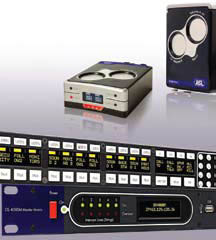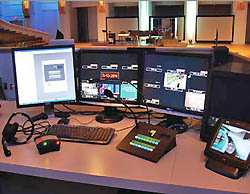As digital has taken over much of the audio signal path, so it goes as well with intercom systems.
Digital intercom systems provide a flexible and scalable foundation for point-to-point and group multi-connections, and they’re enjoying increased usage across a wide range of live productions and installed applications such as churches, theatre, performing arts centers, stadiums, broadcast facilities and more.
Analog intercom systems often incorporate a patchbay that facilitates connecting (usually via shielded twisted pair, a.k.a., microphone cable) individual stations with a base station. A common concern is a bad cable that causes a short, taking down a channel.
Further, many of these systems are “partyline” – whoever has a headset with a microphone or a station with a mic can join the conversation – whether they’re wanted or not.
The result, for example, is production staff that ends up talking over each other, hampering communication. I’ve even heard a story of a show director sending a stagehand up to a spotlight location with a roll of duct tape, presumably to tape that particular spotlight operator’s mouth shut.
Digital intercom systems eliminate those types of problems in addition to providing vastly increased functionality. The producer in our example above could have the stagehand mute the mic of that spotlight operator from the cozy comfort of the production booth simply using PC software to “click” the mute button for that headset.
Many digital intercoms provide the capability to talk station to station, create an ad-hoc group, reconfigure groups, connect over the Internet to a remote location, bring in a phone call in and route it to a specific station or channel.

Systems usually include a base station with a matrix that offers a scalable foundation for a dozen channels, on up through thousands of channels.
Digital technology provides a lot of flexibility in setting up user-to-user as well as group-based multi-connection communications. Accompanying software suites makes it pretty simple to configure a system for particular applications.
Digital intercoms typically operate on networks that can be configured in daisy chain, line or star topologies, with the system professional (designer/installer) able to choose the approach that is most efficient and cost-effective for the given application. And flexibility continues to improve.
For example, the ASL Digital Intercom allows direct person-to-person communication (like a telephone call) from any user station (including beltpacks) to any other user station, without tying up a channel.













